Top 10 Sooners: Running Back
Honorable Mentions:
Prentice Gautt (1956-1959)
Prentice Gautt was more than just a great running back. Oklahoma’s No. 38 was the first Black athlete to earn a football scholarship at the University of Oklahoma, breaking the color barrier for the Sooners. Before arriving at OU, Gautt was the first Black player to play in the All-State game, where he won the game’s MVP representing Oklahoma City’s Douglass High School. A symbol of progress on and off the field, Gautt earned every bit of his scholarship rushing for 1,395 yards and seven touchdowns in 1958 and 1959 while averaging 5.8 yards per carry. He earned All-Big Eight honors both years and was an Academic All-America team in 1959. Gautt was also named the Orange Bowl MVP in 1959, his last game as a Sooner before a seven-year NFL career. After his career on the field ended, Gautt pursued a Ph.D. in psychology at Missouri while helping coach the Tigers. Since 1999, the academic center at Gaylord Family Oklahoma Memorial Stadium has bore the name of Gautt, and Gautt was given an honorary doctorate from OU in 2003.
Clendon Thomas (1955-1957)
One of the most decorated running backs from Bud Wilkinson’s legendary teams of the late 50’s, Clendon Thomas amassed 2,156 rushing yards and posted a 31-1 record in his three seasons for Oklahoma. Thomas led the Sooners in scoring in 1956 and 1957, and was named consensus All-America in 1957. Like almost all Sooners from the era, he played on both sides of the football but was a star on both offense and defense, also leading the charge as a defensive back. In 1956, Thomas made his mark against Notre Dame on defense, returning Heisman Trophy winner Paul Hornung’s pass for a 36-yard touchdown in OU’s 40-0 domination of the Fighting Irish. Thomas finished ninth in the Heisman Trophy voting in 1957 as well. Thomas was drafted in the second round by the Los Angeles Rams, beginning an 11-year NFL career as a stalwart defender. Thomas was named a Pro Bowler in 1963, and was later inducted into the College Football Hall of Fame in 2011.
Tommy McDonald (1954-1956)
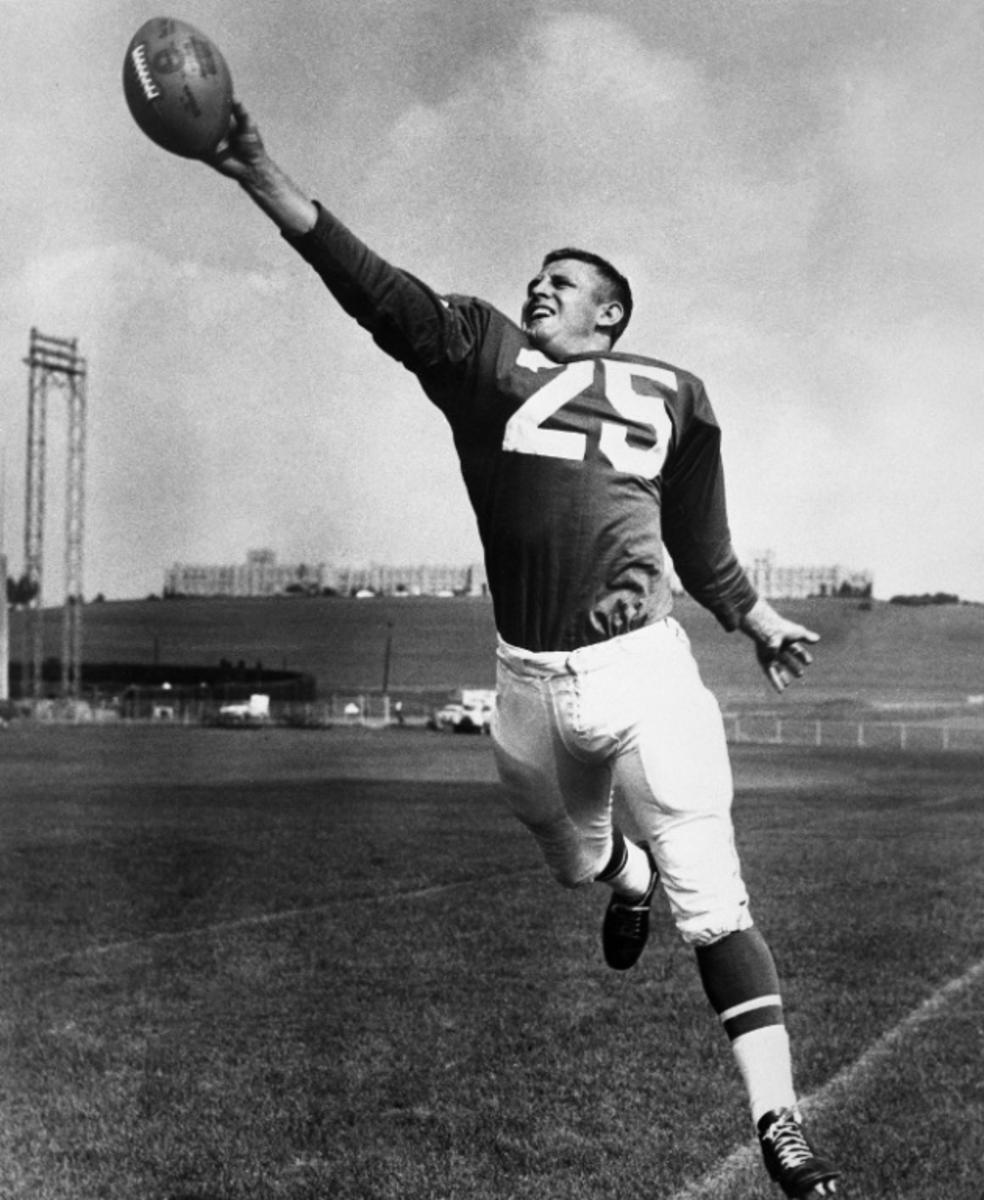
A teammate of Clendon Thomas, Tommy McDonald is classified as a wide receiver for the purposes of the Top 10 Sooners countdowns, but his exploits as a Sooner earned him an honorable mention with the running backs as well. Bursting onto the scene as a starter in 1955, McDonald carried the ball 114 times for 715 yards and 16 touchdowns on the ground, and then improved on that mark with 853 yards on 119 carries in 1956. A two-time consensus All-American, McDonald won the Maxwell award in 1956 and finished third in the Heisman Trophy voting, finishing his Oklahoma career undefeated and a two-time national champion. A serial winner in college, McDonald was drafted by the Philadelphia Eagles in the third round of the 1957 NFL Draft, where he would later help the Eagles defeat Vince Lombardi’s Green Bay Packers with a 35-yard touchdown catch in the 1960 NFL Championship. McDonald was a two-time NFL All-Pro First Teamer in 1959 and 1960, a Second-Team All-Pro selection in 1961 and 1962, and a six-time Pro Bowler. The 12-year NFL veteran was inducted into the Pro Football Hall of Fame in 1998 after finishing his career with 9,891 all-purpose yards.
Mike Gaddis (1987-1991)
There is no doubt that Mike Gaddis would go down as one of the all-time greats had he been able to stay healthy during his career for the Sooners. First handed playing time 1988, the Midwest City, OK, product took advantage, gaining 553 yards on his 92 carries, scoring a trio of touchdowns. In his 1988 season, he also went blow-for-blow with Heisman Trophy winner Barry Sanders, as Sanders ran for 215 yards and two scores to Gaddis’ 213 yards and two touchdowns in Bedlam. A year later, Gaddis carried the ball 110 times for 829 yards before tearing his ACL against the Texas Longhorns. Rehabbing the entire 1990 season, Gaddis returned to rush for 1,240 yards and 14 touchdowns in 1991, catching the eye of the Minnesota Vikings who took him in the sixth round of the 1992 NFL Draft. Another knee injury meant he would never take the field in the NFL, but Gaddis’ talent was hailed by teammates and coaches alike, including Barry Switzer and Cale Gundy.
Marcus Dupree (1982-1983)

Marcus Dupree is the best running to ever step foot on Owen Field. Full stop.
However, due to the infamous circumstances surrounding his legacy on the football field, he didn’t accrue the body of work to be named as one of the 10 best running backs in Oklahoma history when taking into account the entirety of each player’s career, both in college football and the pros. The most highly sought after recruit in the country, Dupree broke Herschel Walker’s career high school touchdown record, prompting the entirety of the college football world descended upon Philadelphia, MS, to pursue Dupree. Switzer's swagger won out, and Dupree made his way to Norman, where Oklahoma’s legendary football coach would alter his wishbone offense to the I-formation, paving the way for Dupree to shine. And after a rocky start, did he ever. Dupree scored his first touchdown in the biggest game of the season, on a 63-yard fake reverse against the Texas Longhorns. Not earning the starting job until seven games into the year, Dupree still ran for 1,144 yards and 13 touchdowns, making him the first freshman in program history to lead the Sooners in rushing. Heading into the 1983 Fiesta Bowl, Switzer criticized Dupree for reporting back to the team overweight, but Dupree still rushed for 239 yards, still a Fiesta Bowl record, in just about one half of action. Dupree and Switzer had a falling out, as the running back told Sports Illustrated his head coach was too hard on him. After the Sooners met the Longhorns in 1983, Dupree suffered a concussion and returned home, only reemerging to announce he would be transferring to Southern Mississippi. But unable play immediately as a transfer, Dupree then elected to enter the USFL, (the NFL requires players be out of high school three years). The former star suffered injuries in 1985 and 1986. He was drafted by the Los Angeles Rams in 1986, but the damage on his body was done and he never lived up to his superstardom at Oklahoma. In 2010, ESPN chronicled Dupree’s rise and fall in the 30 for 30 film “The Best that Never Was”, where Dupree expressed how he had wished he and Switzer could have worked out their differences and he wished he had remained a Sooner where he could have helped his teammates win the 1985 national title.
Top 10:
10. De’Mond Parker (1995-1998)
A bright spot in some of the darkest days of Oklahoma football, De’Mond Parker was the first Sooner running back to register back-to-back-to-back 1,000-yard seasons. Totaling 3,404 yards and 21 touchdowns on the ground from 1996-1998, Parker sits eighth on OU’s all-time rushing list, averaging 5.88 yards per carry for his career. Parker shined brightest on the biggest stage, rushing for 291 yards against Ricky Williams’ Texas Longhorns in 1997, still the highest single-game rushing total ever posted in the historic rivalry. After being named the Big 12 Freshman of the Year in 1996, Parker could never break onto the All-Conference First Team, finishing a Second Team selection all three years. When Bob Stoops was named the head coach of the Sooners in 1999, his best efforts couldn’t keep Parker on campus in Norman, as the running back elected to declare for the NFL Draft. Parker was selected in the fifth round by the Green Bay Packers, but he only started one game in his two seasons as a Packer. In 2001, Parker was a member of the Detroit Lions, marking the final year of his NFL career.
9. Quentin Griffin (1999-2002)
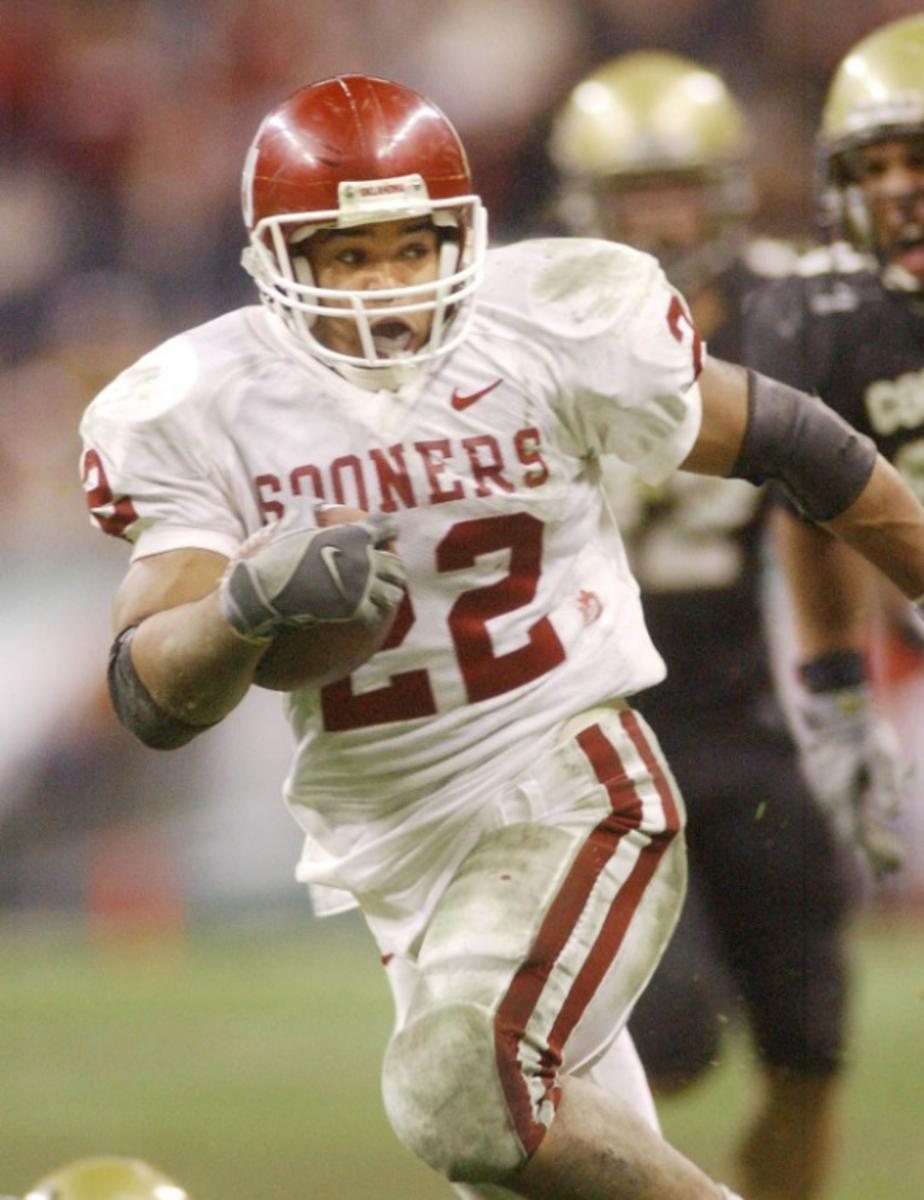
When Quentin Griffin arrived at Oklahoma, nobody could have ever expected the 5-foot-7, 190-pound running back would leave as the school’s fourth-leading rusher. But that’s exactly what “Q” did. Rushing for 3,938 yards, Griffin finished his career with 5,275 all-purpose yards for Oklahoma. While he rushed for 1,884 yards and 15 scores in 2002, Griffin’s performances to help the Sooners win the 2000 National Championship helped pen his name as one of the all-time greats. As Stoops’ Sooners proved they were for real in a Red River Rout of Texas, Griffin found the end zone six times, an OU record. Later that season in the BCS National Championship game against Florida State, Griffin scored the only touchdown of the game, a 10-yard scamper which all but sealed Oklahoma’s seventh title as a program. Griffin was selected in the fourth round of the 2003 NFL Draft by the Denver Broncos, where he fought for playing time for three seasons. In 2004, after running for 156 yards and three scores against the Kansas City Chiefs in the season opener, Griffin looked to have established himself as a key member of the Bronco offense before tearing his ACL in Week 7. Never able to return to full health, Griffin had one-year stints in Kansas City, NFL Europe and the CFL before eventually retiring from football as a player. Griffin returned home to earn his degree at OU in 2017, and he is now the running backs coach at Blinn Community College.
8. DeMarco Murray (2006-2010)
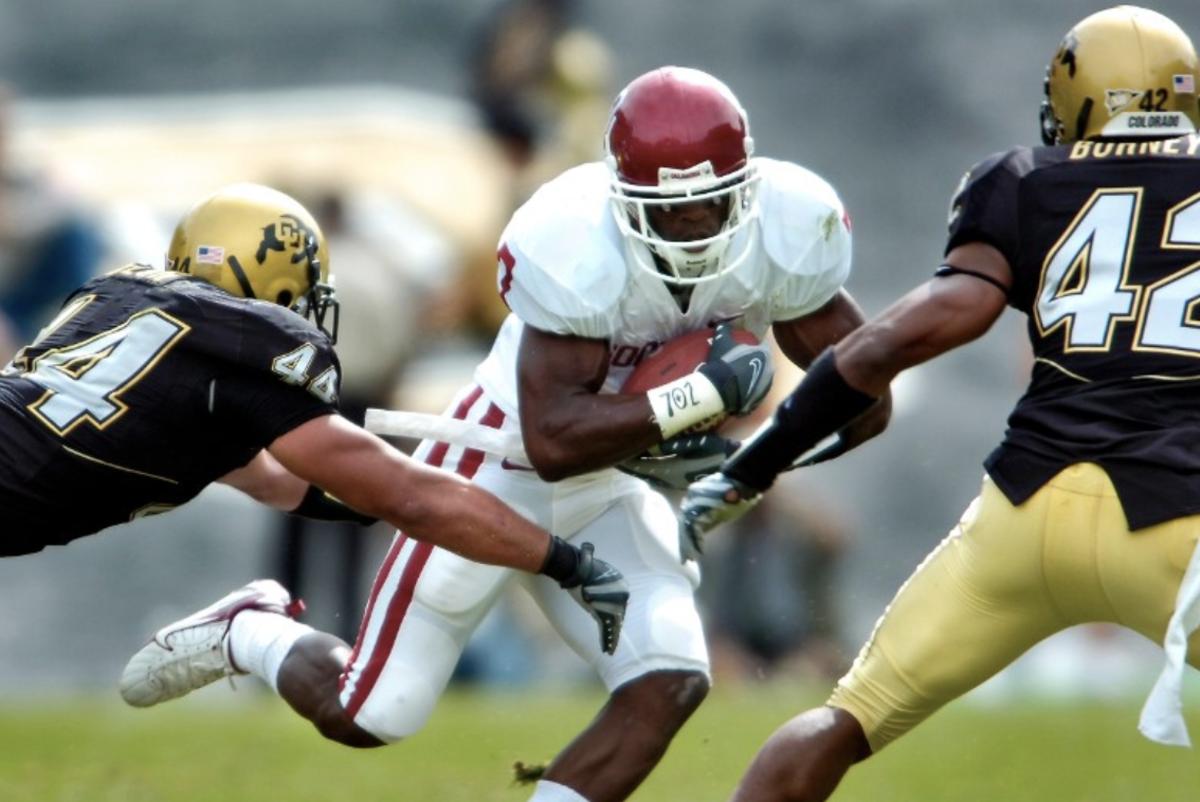
Seeing DeMarco Murray show out on the basketball court was all Bob Stoops needed to be sold on the talent the Las Vegas native possessed. After redshirting his first year at Oklahoma, Murray’s athletics and versatility were constantly on display. An all-purpose yardage monster, Murray sits at 21st on the all-time NCAA list, finishing with 3,685 rushing yards, 1,571 receiving yards and 65 total touchdowns, plus return yardage. But Murray also unlocks one of the greatest what-ifs in OU history. After sustaining an injury on the opening kickoff of the 2008 Big 12 Championship game, Murray missed the National Championship Game against Tim Tebow’s Florida Gators. The Sooners lost 24-14 after struggling mightily inside the red zone without their most talented running back. Murray went on to have a good NFL career that spanned seven seasons. He was voted a Pro Bowler three times and named first-team All-Pro once. In that 2014 season, Murray also was awarded the NFL Offensive Player of the Year after winning the NFL rushing crown with 1,845 yards and scoring 13 touchdowns for the Dallas Cowboys. Perhaps his best performance on a football field came in his rookie season in Dallas, however. Taking over for the the injured Felix Jones, Murray usurped former Sooner Tashard Choice to carry the ball 25 times for 253 yards against the St. Louis Rams, a Cowboys record.
7. Samaje Perine (2014-2016)
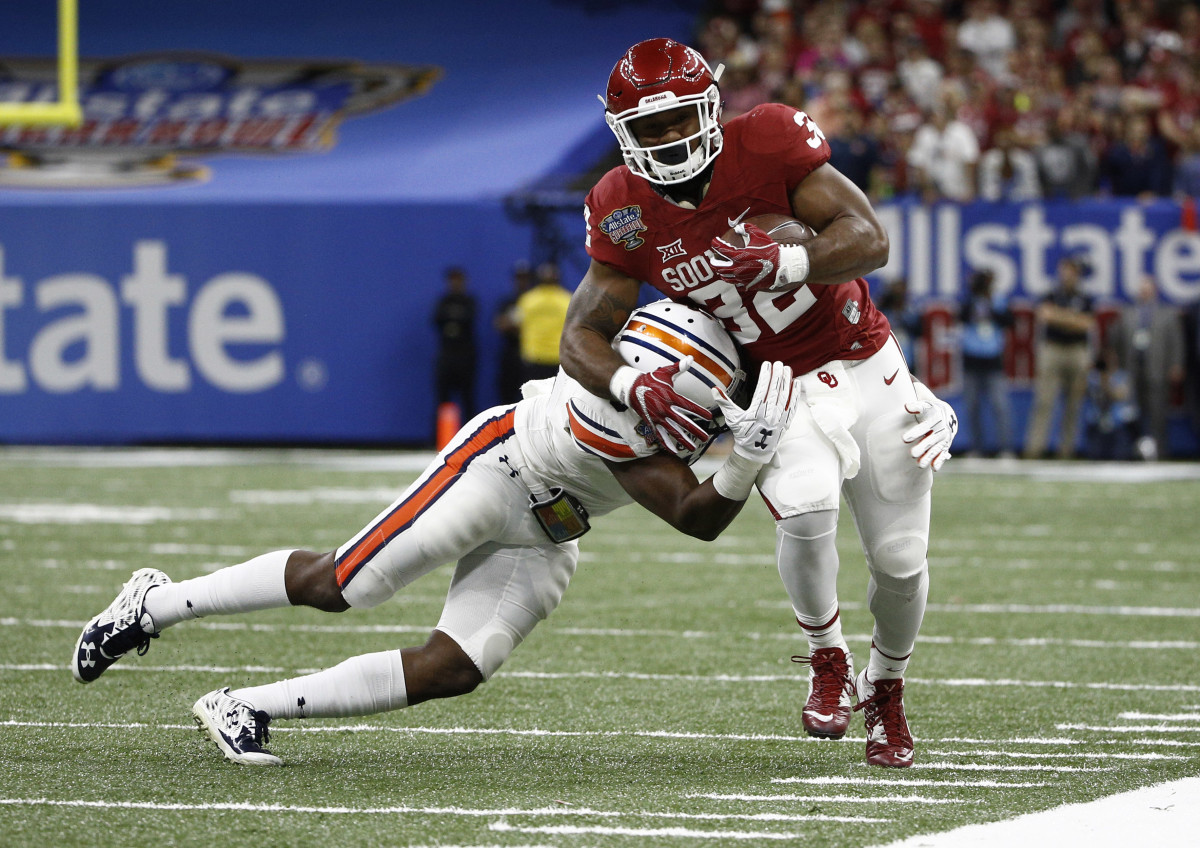
Oklahoma’s all-time leading rusher checks in at No. 7 on this list, and it’s not the only record Samaje Perine left school with. On a dreary rainy day agains the Kansas Jayhawks in November of 2014, Perine’s day ended with a 42-yard scamper, breaking the NCAA single game rushing record as it gave the then-true freshman 427 yards for the day. After the game, it was said that Perine had told running backs coach Cale Gundy that he didn’t need to go back into the game, and that the record wasn’t that important. That quiet humble nature followed Perine all the way through his Sooner career. Capping off his final season in Norman with a pair of big performances against Texas and Oklahoma State, rushing for 214 and 239 yards respectively (including mercy-kneeling at the 2-yard line against the Cowboys), Perine finished his OU career with 4,122 yards. He’s struggled to translate his bruising style to the NFL, as he’s had four stops on three different rosters after Washington selected him in the fourth round of the 2017 NFL Draft. Perine is currently a member of the Cincinnati Bengals.
6. Steve Owens (1966-1969)
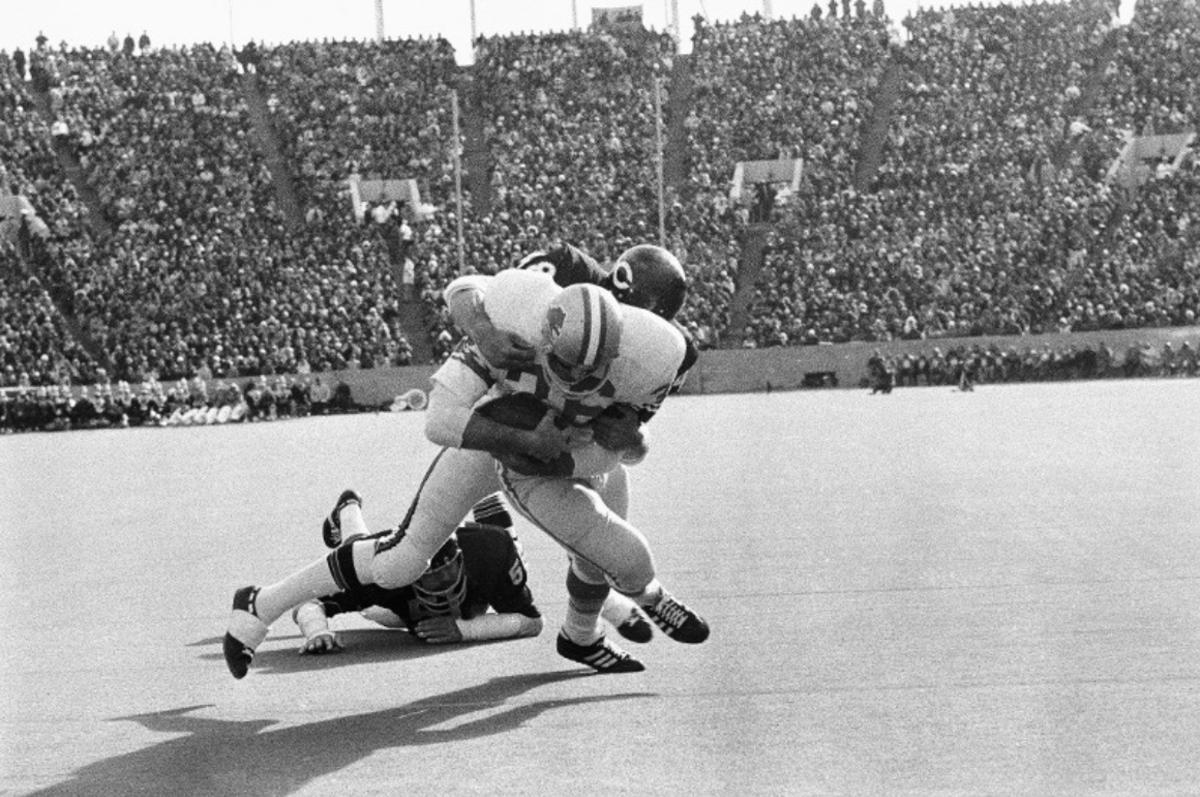
Oklahoma’s second Heisman Trophy winner was the spitting image of consistency. A graduate of Miami High School in far northeast Oklahoma, Steve Owens powered his way to a then-school record 4,041 career rushing yards on 4.3 yard per carry, and left the school the all-time leader in touchdowns with 53, a mark that wasn’t surpassed until 2010 when DeMarco Murray took the crown. Five touchdowns and a 47-0 drubbing of the Nebraska Cornhuskers wasn’t enough for Owens to win the Heisman in 1968, as O.J. Simpson was dominating college football at USC. A year later, Owens would capture the award. Punctuating the season, he carried the ball 55 times for 261 yards against Oklahoma State to beat the Cowboys 28-27 in the regular season finale. Owens was also named a consensus All-American in 1969, and won the Walter Camp Award. Moving on to the NFL, Owens was drafted in the first round by the Detroit Lions. In a pro career bogged down by injuries, Owens was able to stay healthy in 1971, where he became the first Lions running back ever to cross the 1,000-yard mark. His 1,035 yard season earned him a berth in the Pro Bowl, as well as a selection onto the All-Pro team. Owens retired in 1976 after injuries caused him to miss the entirety of the 1975 season. Owens returned to Oklahoma to serve as athletic director from 1996-1998, and is a founding member of the Norman Public School Foundation and the Miami (OK) Public School Foundation. He was elected into the College Football Hall of Fame in 1991.
5. Greg Pruitt (1969-1972)
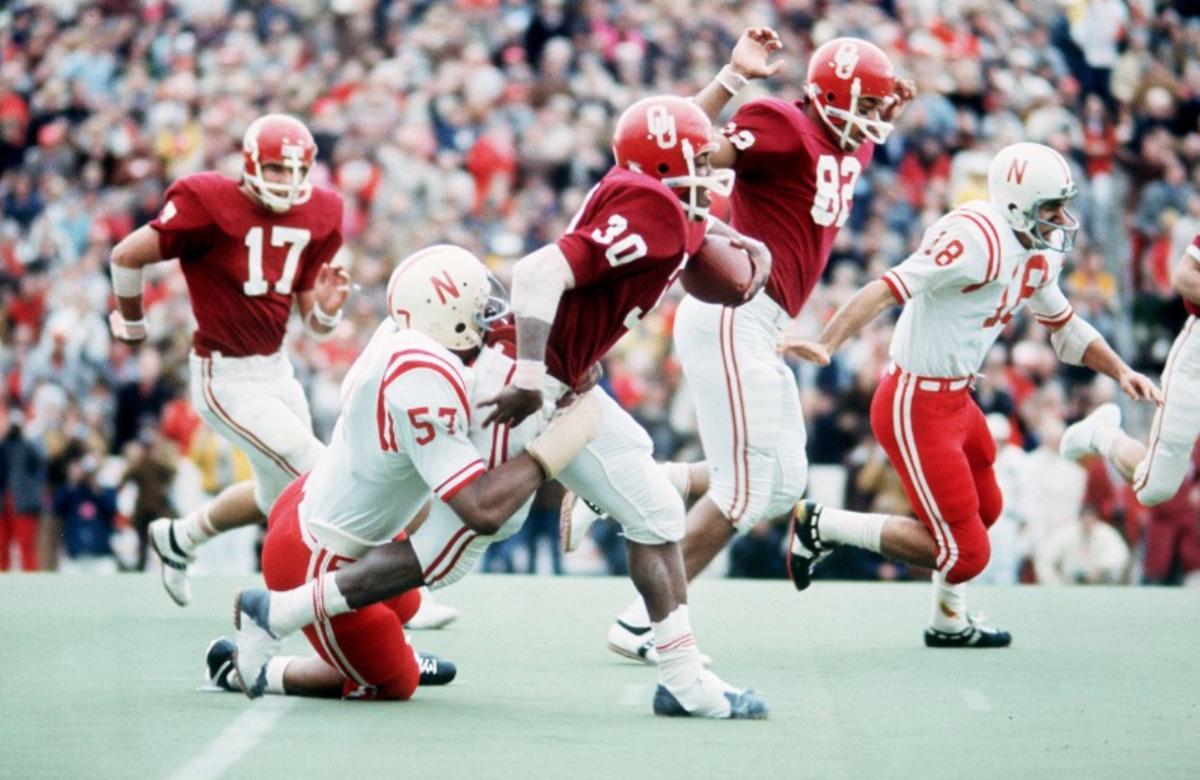
Expecting to play wide receiver at Oklahoma, Greg Pruitt’s plans changed when the Sooners converted to the wishbone offense in 1970. After debating leaving Norman, Pruitt elected to stay and he eventually got his shot in 1970 when Everett Marshall went down with an injury. Averaging 5.4 yards per carry in limited action in 1970, Pruitt turned it on a year later. Rushing for 1,760 yards on 196 rushing attempts, Pruitt averaged an unbelievable 9.0 yards per carry in 1971. Pruitt also set the OU single game rushing record with 294 yards and three touchdowns in a 75-28 beatdown of the Kansas State Wildcats. Pruitt finished third in the Heisman Trophy voting in 1971, while also being named consensus All-America and All-Big Eight. Though hampered by injuries, Pruitt still rushed for 938 yards and 13 touchdowns in 1972, finishing second in the Heisman Trophy voting, and again earning All-America and All-Big Eight honors. Pruitt went on to be selected by the Cleveland Browns in the second round of the 1973 NFL Draft, where he would spend nine seasons with the organization. A perennial star, Pruitt was named a Pro Bowler four times with Cleveland and was a Second Team All-Pro honoree in 1977. Pruitt was traded to the Los Angeles Raiders, where he won Super Bowl XVIII as the Raiders’ star kick returner. Pruitt was named a Pro Bowler once again in 1983. Pruitt was inducted into the College Football Hall of Fame in 1999. The NFL also banned tear-away jerseys in 1979 in part due to Pruitt’s insistence on wearing them throughout the 1970’s, making life almost impossible on would-be tacklers.
4. Billy Vessels (1949-1952)
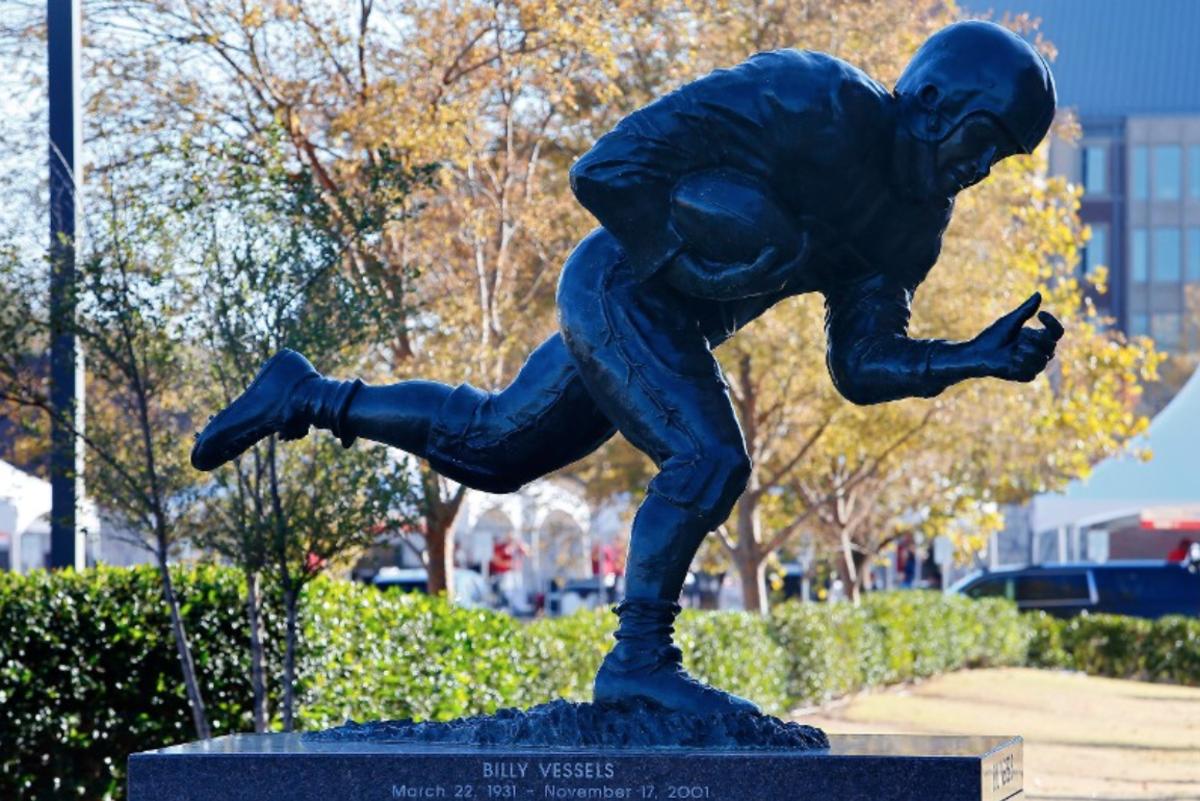
Oklahoma’s first Heisman Trophy winner arrived in Norman in 1949 by way of Cleveland, OK. Seeing action as a sophomore in 1950, Billy Vessels first rushed his way into OU history with the go-ahead touchdown against the Texas Longhorns. Despite missing a good chunk of the season due to an injury, Vessels still ran for 938 yards and 13 touchdowns, averaging 6.2 yards per carry. Healthy again in 1952, Vessels broke into stardom for Wilkinson as a senior. Scoring three touchdowns and rushing for 195 yards in a loss to Notre Dame in the first nationally televised football game, Vessels racked up 1,072 yards, crossing the 100-yard mark seven times, while finding the end zone 17 times. Vessels won the Heisman Trophy in 1952, and was taken with the No. 2-overall pick by the Baltimore Colts in the 1953 NFL Draft. However, Vessels elected to play for the Edmonton Eskimos in 1953, where he was named the CFL’s Most Outstanding Player. Vessels left professional football to serve as an officer in the U.S. Army, and when he returned to the Baltimore Colts, his career was cut short by a leg injury. The Heisman Trophy winner retired to Coral Gables, FL, where he become heavily involved in horse breeding. Vessels was named to the College Football Hall of Fame in 1974.
3. Joe Washington (1972-1975)
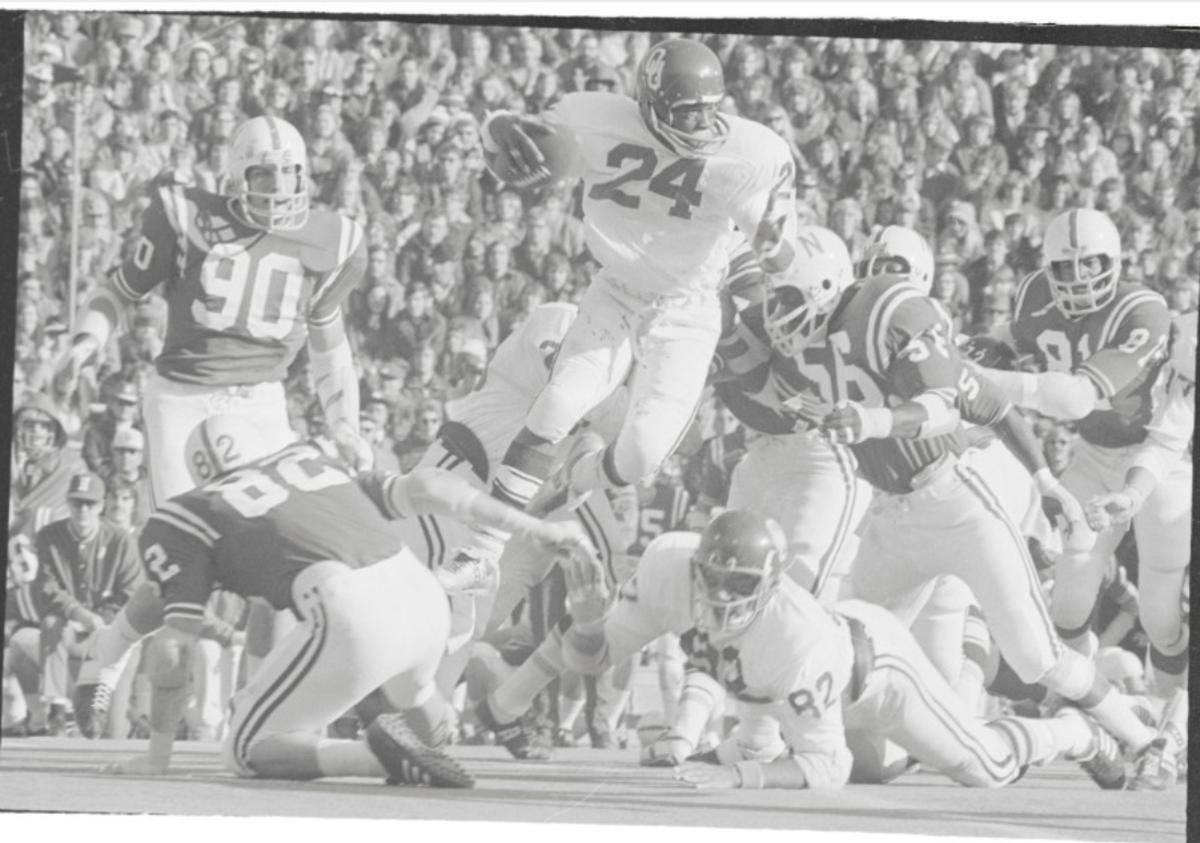
Perhaps no player in OU football history had a feel for the big moment quite like Joe Washington. Gliding up and down the field in his signature silver shoes, Washington finished his playing career atop the Oklahoma rushing list. Totaling 4,071 career rushing yards, Washington helped lead the Sooners to back-to-back national titles in 1974 and 1975. Washington delivered the Sooners the 1975 title from the jaws of defeat against Missouri. Down by a touchdown late in the fourth quarter, Washington took the pitch to the right and made three Tigers miss on his way to a 70-yard score. He also punched in the 2-point conversion to complete the comeback, and keep Oklahoma’s repeat hopes alive. Washington was a Third-Team All-American in 1973, and a consensus All-American in 1974 and 1975, finishing third in the Heisman Trophy balloting in 1973. The San Diego Chargers took Washington with the fourth pick in the 1976 NFL Draft, where he would have a 10-year career. After struggling to make an impact with the Chargers, Washington was traded to the Baltimore Colts, where he found his groove. Leading the NFL with 82 receptions in 1979, Washington was named to the Pro Bowl. After getting traded to Washington from Baltimore in 1981, the former Sooner helped lead the Redskins to the Super Bowl XVII crown, and he helped the Redskins return to the Super Bowl the next year, where they fell to the Los Angeles Raiders. Washington was inducted into the College Football Hall of Fame before returning to Oklahoma in 2007 to serve as a special assistant to athletic director Joe Castiglione until 2021.
2. Billy Sims (1975-1979)
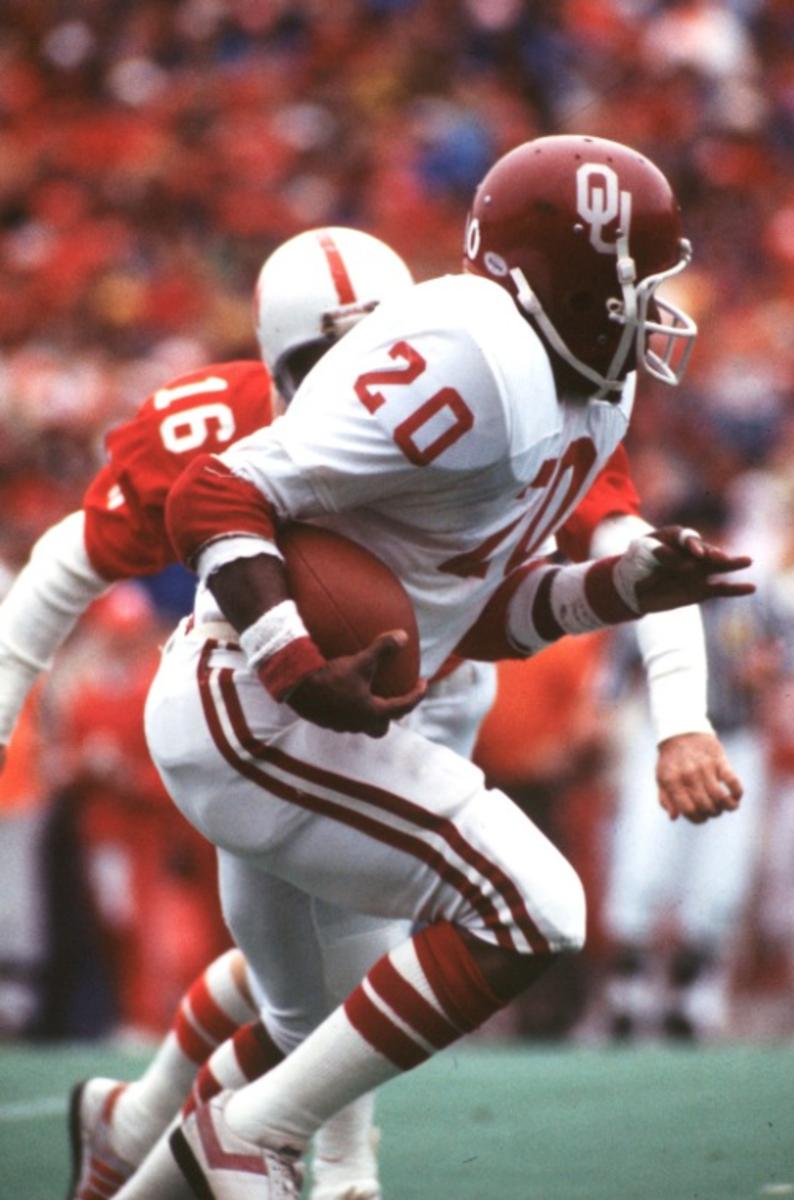
Though a part of the same roster as Washington, a medical redshirt held Billy Sims out of the 1976 season. In 1977 he rushed for just 413 yards and six touchdowns before he got healthy in 1978. And did he ever produce. Setting the Big Eight record with 1,762 yards in 1978, Sims averaged 7.0 yards per carry and found the end zone 20 times on the ground. The Hooks, TX, product logged four 200-yard games ad won the Heisman Trophy. In 1979, Sims finished with 1,670 yards and scored 23 touchdowns, but 529 yards came in the Sooners' final two regular season games against Missouri and Nebraska, after a portion of the Heisman ballots had already been cast. As a result, he finished runner-up to USC’s Charles White, becoming one of only six players to ever win the award and finish second. He wrapped up his OU career with 164 yards in the Orange Bowl against Florida State and ended with 4,118 career rushing yards, still good for second in program history. Sims was taken with the No. 1 overall pick in the 1980 NFL Draft by the Detroit Lions, where he played for four seasons. He was voted Offensive Rookie of the Year and Second Team All-Pro in 1980. In his second year in the league, Sims was named First Team All-Pro before a knee injury ended his career prematurely. Sims’ exploits on the field merely marked the first chapter of his book in OU history, as he is now one of the most visible members of Oklahoma’s Heisman fraternity, proudly yelling “Boomer!” to any Sooner who is voted a finalist for the trophy, and is the proprietor of Billy Sims BBQ.
1. Adrian Peterson (2004-2006)
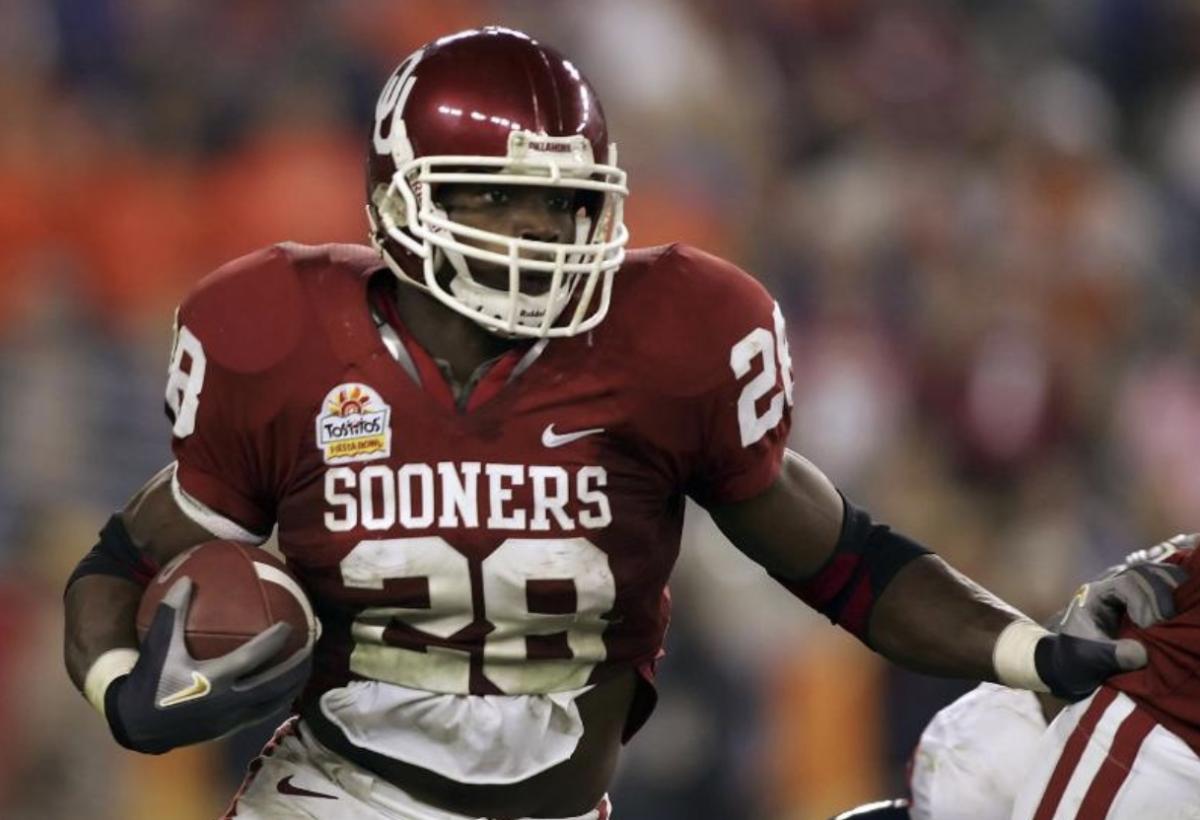
Adrian Peterson has dominated defenses for nearly two decades with his raw power and sheer will, running over or around every defender in his path. After joining the Sooners in 2004, it took four games for Bob Stoops to fully turn over the reigns to his freshman phenom, but Peterson’s talent was undeniable. Exploding for 225 rushing yards against the Texas Longhorns, Peterson ran for a NCAA record 1,925 yards as a freshman, nearly becoming the first freshman to capture the Heisman Trophy. Despite finishing second to USC quarterback Matt Leinart, Peterson was still the first OU freshman named an AP First-Team All-American. Peterson’s sophomore and junior seasons were tarnished by injuries, but he still became the second player in school history with three 1,000-yard seasons and finished his Oklahoma career with 4,045 rushing yards. He no doubt would be OU’s all-time leading rusher had he stayed healthy through all of 2005 and/or 2006. The Sooner star averaged 5.4 yards per carry during his OU career and scored 41 career touchdowns on the ground. In the 2007 Draft, his injury concerns led to him dropping all the way to the seventh overall pick, where the Minnesota Vikings took the services of the future Hall of Famer. Peterson didn’t wait long to make his mark, rushing for 1,341 yards in his rookie season, including an NFL-record 296 yards against the San Diego Chargers. Teaming up with Brett Favre in 2009, Peterson came within one game of making the Super Bowl, as the Vikings fell to the New Orleans Saints in the NFC Championship Game. In 2012, one season after a devastating knee injury, Peterson won the NFL MVP, rushing for 2,097 yards, just eight yards short of Eric Dickerson’s all-time single season mark of 2,105. The Vikings and Peterson parted ways after the 2016 season, and Peterson logged stops in New Orleans, Arizona, Washington and Detroit. Despite the modern NFL offense mostly abandoning the philosophy of feeding one back 30 times a game out of a power set, Peterson’s skills have kept him on NFL rosters, where he hopes to again find a role in 2021. In total, Peterson has been named First-Team All-Pro four times and made second team three times. He won the NFL rushing title in 2008, 2012 and 2015, as well as being the NFL’s rushing touchdown leader in 2009 and 2015. he's currently fifth all-time with 14,820 rushing yards and fourth in NFL history with 118 rushing TDs. Peterson’s blend of a dominant college and professional career cements him atop the mountain as Oklahoma’s greatest running back of all time.
